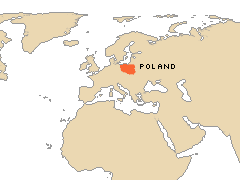
How do we know
Beginning in the 1980s, the Marie Sklodowska-Curie Memorial Cancer Centre and the Institute of Oncology in Poland began conducting and publishing annual research about the health impact of smoking and the link between smoking and cancer, and the prevalence of smoking.Downloads
- Read the entire case study
(PDF | 144 K)
Health Condition: Tobacco is the second deadliest threat to adult health in the world and causes 1 in every 10 adult deaths. It is estimated that 500 million people alive today will die prematurely because of tobacco consumption. More than three quarters of the world's 1.2 billion smokers live in low- and middle-income countries, where smoking is on the rise. By 2030, it is estimated that smoking-related deaths will have doubled, accounting for the deaths of 6 in 10 people. In the 1980s, Poland had the highest rate of smoking in the world. Nearly three-quarters of Polish men aged 20 to 60 smoked every day. In 1990, the probability that a 15-year-old boy born in Poland would reach his 60th birthday was lower than in most countries, and middle-aged Polish men had one of the highest rates of lung cancer in the world.
Intervention or Program: In 1995, the Polish parliament passed groundbreaking tobacco-control legislation, which included:
- the requirement of the largest health warnings on cigarette packs in the world;
- a ban on smoking in health centers and enclosed workspaces;
- a ban on electronic media advertisement; and
- a ban on tobacco sales to minors.
Impact: Cigarette consumption dropped 10 percent between 1990 and 1998, and the number of smokers declined from 14 million in the 1980s to under 10 million at the end of the 1990s. The reduction in smoking led to:
- 10,000 fewer deaths each year;
- a 30 percent decline in lung cancer among men aged 20 to 44;
- a nearly 7 percent decline in cardiovascular disease; and
- a reduction in low birth weight.

